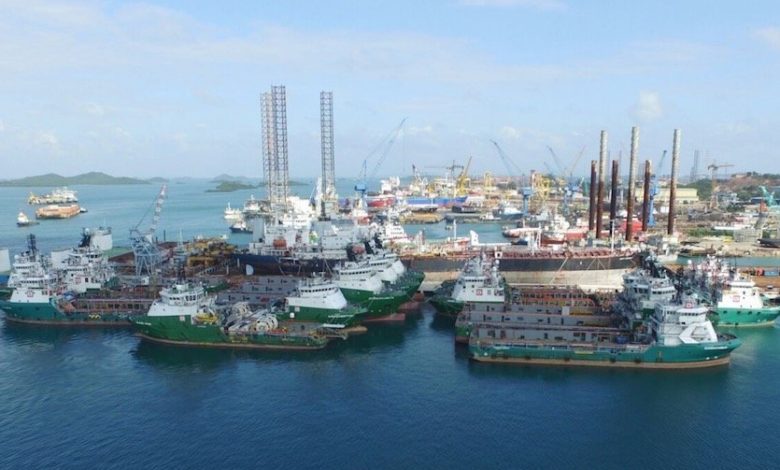Sell, stack or scrap: What to do with all these OSVs?

To say that the offshore marine sector is in trouble is an understatement par excellence. Numerous articles on the subject reflect this unfortunate reality and a recent panel discussion at the Offshore Marine Forum in Singapore confirmed that the sector in Southeast Asia was experiencing its worst ever downturn. I have also seen an increase in the number enquiries asking the following questions:
- When do I think the downturn will end and the market shift?
- What are realistic values to ascribe to vessels?
- Should they scrap, lay-up or sell a vessel?
Whilst these are very good questions, the current situation in the market makes the answers very difficult to construct. This piece will look at some the issues that complicates providing simple answers.
When looking at the general state of the offshore oil and gas market we see that the following OSV market drivers are in decline. These include:
- Onshore shale gas supplies in the US have distorted market pricing mechanisms,
- Offshore field investment have declined by approximately 34% since the highs of 2014,
- Rig utilisation rates are down to 53% (the current mix: drill barge 25%, drillship 53%, and JUR 53%),
- In 2016 we had 600 rigs active, 82 new entries and nine scrapped
- By 2020 the market will reach 658 rigs as against the 329-455 rigs that would be needed
There are however indications that the market is starting to shift, and we are starting to see contracts renewed, extended and new ones awarded. Driving this, particularly in the North Sea and shallow water are two growth sectors: decommissioning and offshore wind farms. However, as one industry experts puts it “In Southeast Asia charter rates are down by 35% to 40% since early 2015. I agree utilisation is also down, ranging from 50% to 80% depending on class and category of vessel.” Based on these observables, I do not believe that new charters will soak up the oversupply issue, but will certainly assist the cash position of many operators.
The oversupply of OSV vessels is marked by the number of vessels laid up. Indications are that the following number of vessels are laid up:
- 60-100 in Batam
- 200 in Labuan and Johor in Malaysia
- 75 in West Africa
- 100 in the North Sea
- 100 in Brazil
- 150 in the US.
And yet the current order book shows 171 AHTSs and 177 PSV newbuilds entering the market in 2017/2018. So the crisis may certainly have bottomed, but the key issue remains.
Inevitability the discussion turns to why operators don’t sell or scrap vessels to bring about balance. This is where the issue becomes complicated. Essentially one has to understand the factors that affect decisions on price and those that affect scrap.
Pricing
Net oversupply of vessels would suggest reduced prices but very few vessels are publically on the market. As an industry expert commented, the reason being that “that any real valuation of vessels right now would lead to a spread of breaches of security covenants with the banks, so no incentive to chase.” What I have seen is operators wait for an offer and depending on cash requirements to service debt, they will accept or reject the offer. In essence the sector is back to the basics of: the price is what the buyer is prepared to pay. It also explains why vessel valuations range from 10 cents to 90 cents in the dollar. Overall we have seen prices for secondhand vessels drop between 15% and 20% over the last 12 months.
Looming on the horizon for owners is the age of the vessel as well as the impact of the ballast water management regulations. Indications are that vessels over the age of 15 years (built before 2002) will have difficulty finding work as newer vessels are more efficient, less costly and more compliant with increased environmental conditions.
Scrapping versus stacking
Under the current scenario, the options open are to stack or scrap a vessel. Scrapping is generally not seen as financially prudent for the following reasons:
- Scrap prices on most OSVs are lower than build / book price, as the scrap rate is generally based on weight,
- Decommissioning / scrapping a vessel is subject to the Basel Convention on waste metal and hazardous waste disposal
- IMO’s Hong Kong Convention on ship materials recycling
- Transport costs to scrapyard.
On the other hand, cold / warm stacking a vessel can be as low as $150 per day, this being made possible by improvements in VCI that better protect essential components in confined spaces. Risk items such as generators, station keeping systems, marine ballast and safety systems can be adequately protected against corrosion.
In conclusion, the OSV sector has significant problems to overcome to bring about a market turnaround. The debate of whether to sell, scrap or stack is essentially an academic one as it does not address the supply/ demand imbalance. Until such time as vessels are removed from the market I do not see a full recovery, and to achieve this, governments may have to consider improving industrial incentives for owners to act.

good bottomline of the overcapacity issue in the OSV market. Concise and clear, thanks!
With some creative thinking, these OSV’s can be put to other uses. Why do people just sit back and NOT use those ships?!
Where are the creative thinkers/business people?
One can not just let those perfectly good vessels go to waste.
It was interesting to see mention of VCI in holding valuable assets in a corrosion inhibited atmosphere to limit atmospheric damage while in storage. JT-Oiltech has offered this service to O&G clients for a number of years in Scotland and works to save clients time, energy (how much is that demumidfier costing?) and the environment.
Dehumidifiers are not always very safe, either.